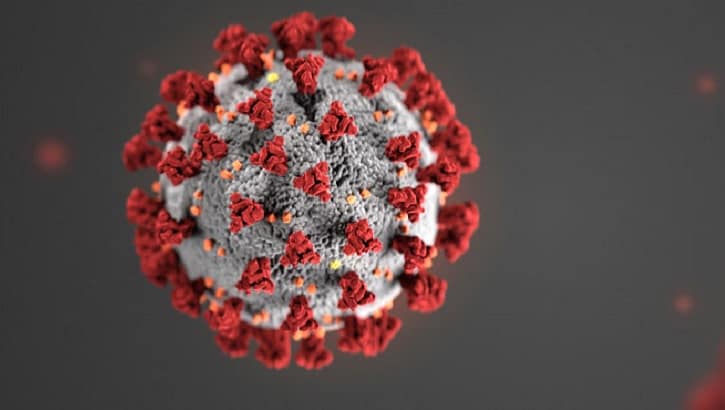
We’re all going to die
We’re all going to die. I’m not trying to cause a panic, but these are the facts.
Every year, about 150 thousand people pass away in the Netherlands. Over half of these are above the age of 80, roughly a third between 65 and 80, and the—relatively small—remaining group is younger. Cancer is the deadliest cause (taking 125 lives per day on average), followed by cardiovascular diseases.
‘Standard’ influenza is also deadly. The RIVM, the National Institute for Public Health and the Environment in the Netherlands, has been keeping statistics on this for years. Two years ago, the flu took about ten thousand more lives than in an average winter. A few of those ten thousand were young and healthy.
Statistics like these have been used frequently to belittle the current crisis, not just by populists as Bolsonaro and Trump, but also by scientists: “it’s just a flu!” But this is not just the flu: it’s more infectious, and more deadly.
Today, 166 people in the Netherlands were reported to have died from complications due to coronavirus. So it’s not only worse than flu; it might be worse than cancer.
Might be. Maybe. That framing of the numbers is potentially exaggerated. It certainly feels hyperbolic. How do we put the situation in context so that it makes sense without any exaggeration?
British statistician David Spiegelhalter calculated that, regardless of age, the probability of dying after getting infected with coronavirus is roughly equal to the probability of dying somewhere in the coming year from all other causes. These statistics are based on British data, but I assume the same roughly holds for the Dutch population: young people are unlikely to die, but sometimes this happens (tragically), and older people have a higher chance of not reaching their next birthday. Thus, COVID-19 roughly equals one year’s worth of risk.
In the worst case, this pandemic will cause life expectancy to go down by a year. But in the Netherlands, life expectancy also goes up by a year (due to better health care and healthier ageing) about every 5 to 10 years. So even in this worst case, the pandemic throws us back to 2010. That suddenly sounds much less scary than “we’re all going to die” (even though we all will eventually).
Mathematically, these comparisons are sound. But of course they also miss the point completely.
It’s not just about the number of people dying from this pandemic; it’s much more about how they die. The prospect of one of your loved ones being denied entry to the hospital because their Intensive Care Unit is over capacity is so much more frightening than the prospect of this person dying peacefully after a long and happy life. This is especially true in countries like the Netherlands, where we believe that universal health care is a basic human right.
In short: not all deaths are equal. Focusing solely on the numbers—counting deaths as if they were chickens—ignores what seems obvious to everyone else.
Of course, this present numbers-obsession isn’t new. The coverage received by terrorism, in the political and public debate in the past decade, is in no way proportional to the number of casualties. Certainly not in the Netherlands.
In 2015, the maximum speed at Dutch motorways was increased from 100 kph to 130 kph. Even though this tripled the number of casualties on the motorways. But nobody has said that drivers should refuse to leave their houses.
If public health policy were based on medical and health arguments alone, then tobacco and alcohol would certainly be prohibited.
It’s clear that we want to avoid the horror scenario of overcrowded ICUs. Doctors in Italy and Spain have compared what they’re experiencing to a war. And it seems that, in the Netherlands, this still is possible (although it will be a close call). Thus, we must do everything we can to “flatten the curve.”
Wash your hands. Stay home if you can. And if you can’t stay home, always stay 1.5m apart from those nearby. Even if it’s inconvenient.
However, we also can’t keep the country in lockdown forever, especially for those less fortunate such as domestic violence victims. If the economic consequences of the lockdown become too severe, we won’t have funds for other types of expensive medical care—such as cancer treatments, which obviously need to continue.
At some point, schools will have to be reopened, followed by universities, concert venues, barber shops, and everything else. Life must go on.
The critical question is when.
Too soon will have serious consequences for public health. But so too will too late. And there still is insufficient information for rational, informed decisions. These are not easy times to be a policy maker: only hindsight is 20-20.
Some of us, though, can take solace in the numbers. Did you know, for example, that under normal circumstances this country has over ten traffic casualties per week? Now that most of us are socially isolating at home, and not on the roads, this number is way down.




Nice article 🙂
However, I disagree with the statement: “This is especially true in countries like the Netherlands, where we believe that universal health care is a basic human right”. The Netherlands doesn´t really have universal healthcare, the healthcare is privatised by insurance companies and the government is offering some help for those who don’t reach a minimum salary. Not all the population benefits from it as you first need to become a legal resident, and even with the help from the government people still have to pay some money out of their pocket every month and the eigen risico in case of any further treatment.